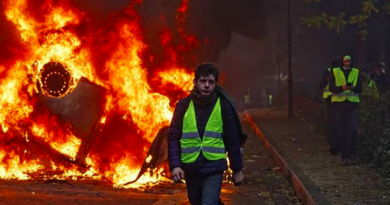Can you name that Brussels statue?
Wouldn’t it be nice if instead of telling your friend, « Hey, why don’t we meet in front of the statue of that guy on a horse, » you could actually call that historical figure by his name? That person was memorialised for a reason.
Historic statues are among the significant features of any place, and yet how easily we can disregard them. We often look at them without really seeing them. They stand there all day, but how many of us have any clue who those people are and what makes them special?
They may look like ordinary landmarks or street furniture. But every statue, memorial, or monument is a window into the past, an opportunity to discover something about the history of a city or a country. Those structures will tell you who people of a particular period exalted as their champions and heroes. And the personalities people chose to immortalise will tell you what they believed in, held dear, and fought for.
So what do the statues in Brussels tell us about the history of this place? Let’s take a closer look at some of them and get to know who they are and what they embody.
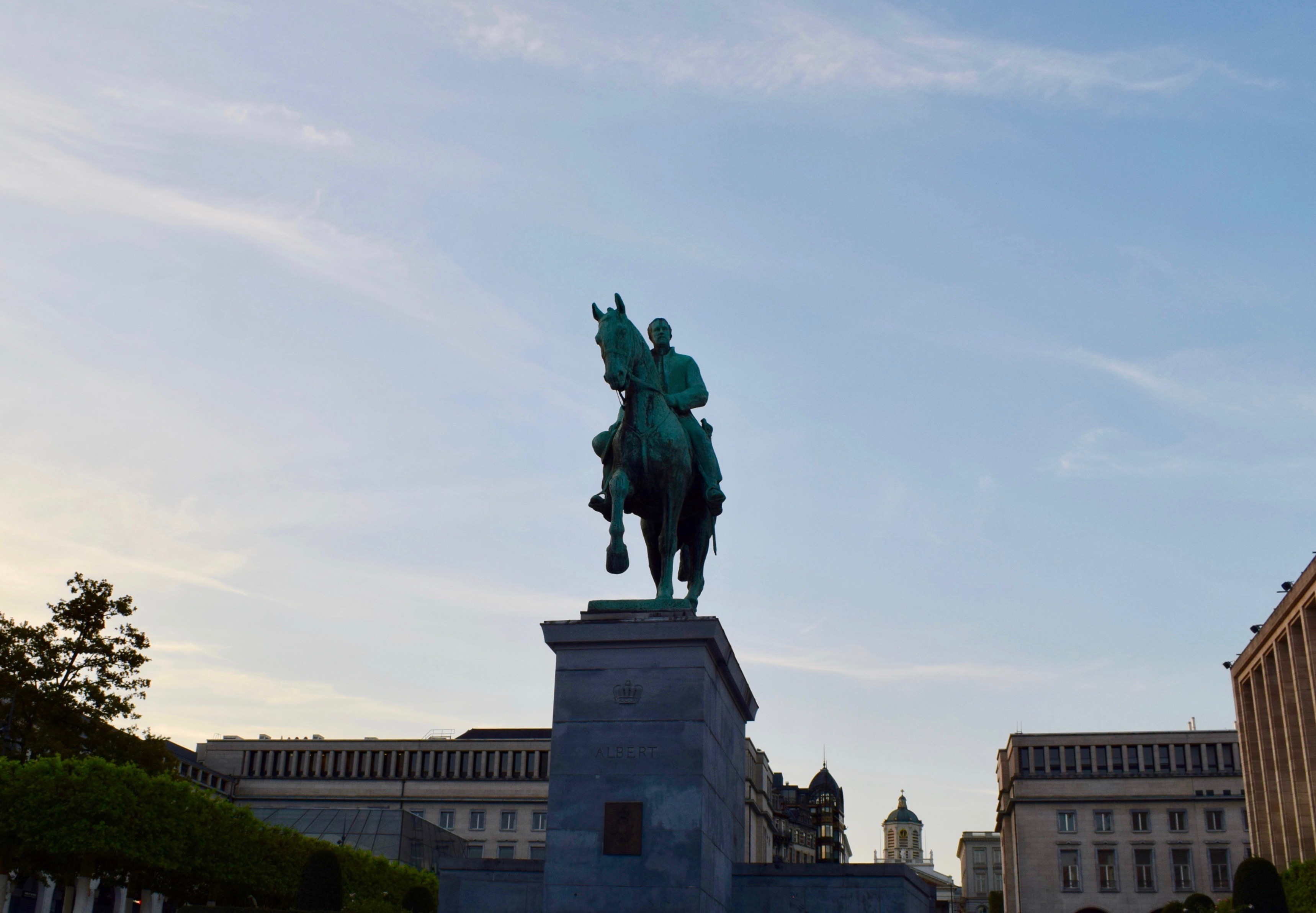
KING ALBERT I
Location: Mont des Arts – Brussels City
Sculptor: Alfred Courtens
Inauguration: 1951
Yes, he’s that guy on a horse at the base of Mont des Arts. So what made him a national hero? Albert I was the King of Belgium from 1909 to 1934, a period covering World War I when much of Belgium’s territory was occupied by the Germans. In 1914, he took personal charge of the Belgian forces and rejected a German ultimatum demanding free passage of German troops across Belgian territory to gain access to French borders. After the Germans invaded Belgium, Albert I and his troops were eventually forced to retreat beyond the Yser River where the King led the famous Battle of Yser to defend the very last piece of unoccupied Belgium.
If that’s not enough to make you feel guilty for ignoring his statue, King Albert I also introduced major reforms in Belgium including universal suffrage, effective equality of the Flemish and French languages, recognition of trade union freedoms, and the extension of social legislation. In 1928, he also created the National Scientific Research Fund (FNRS) to encourage industrial development.
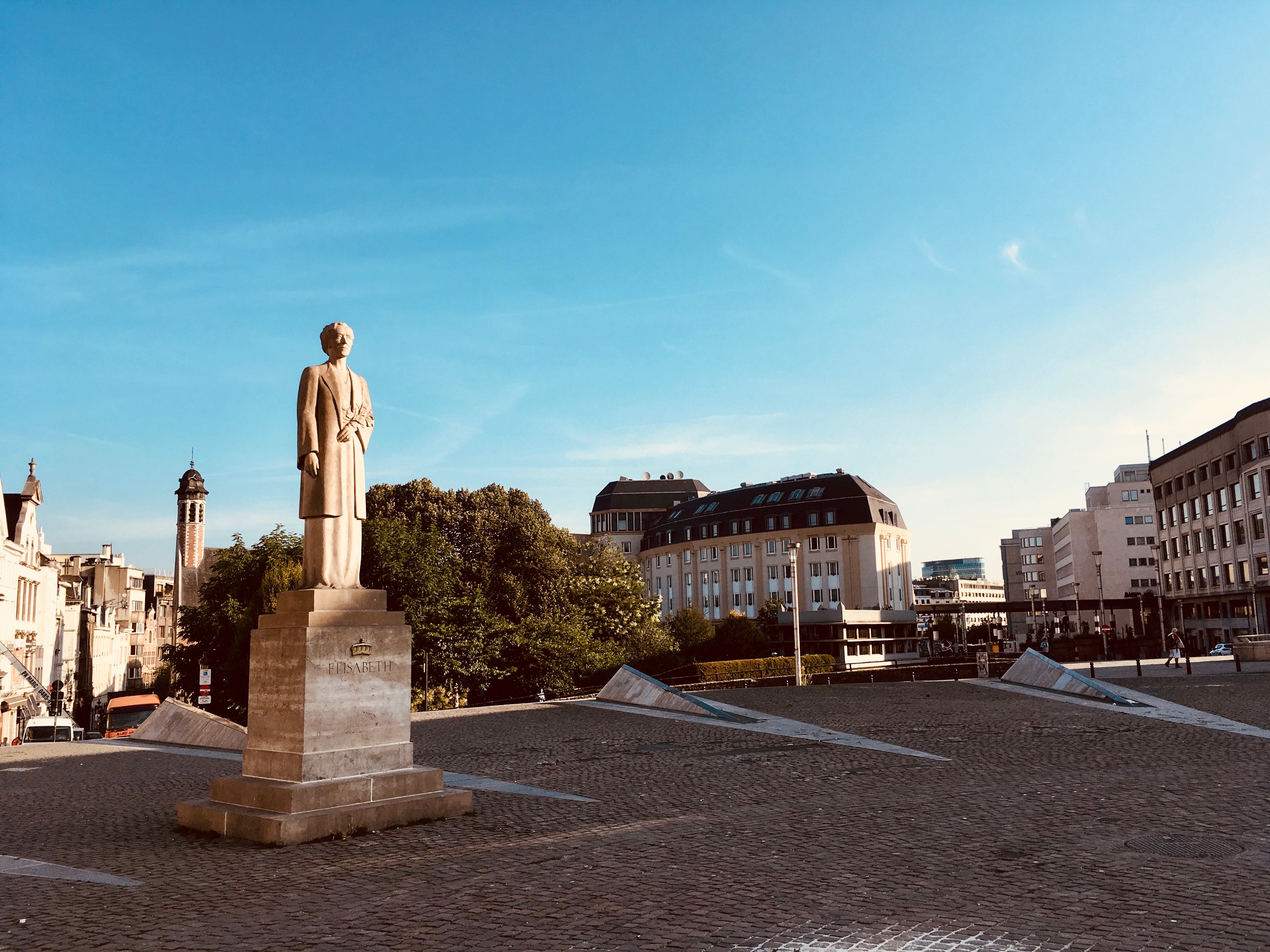
QUEEN ELISABETH
Location: Place de l’Albertine across Mont des Arts – Brussels City
Sculptor: René Cliquet
Inauguration: 1970
Just across the street facing the statue of King Albert I, you will find the figure of his beloved wife, Queen Elisabeth who was herself a heroine of World War I. She worked with the nurses taking care of wounded soldiers on the war front. She was also instrumental in establishing the symphony orchestra of the field army. During the war, the Queen often traveled to the United Kingdom under the guise of visiting her children who were studying there, but she secretly relayed information from her husband to the British government. After the war ended in 1918, the royal family made a triumphal return to Brussels and began the process of rebuilding the nation.
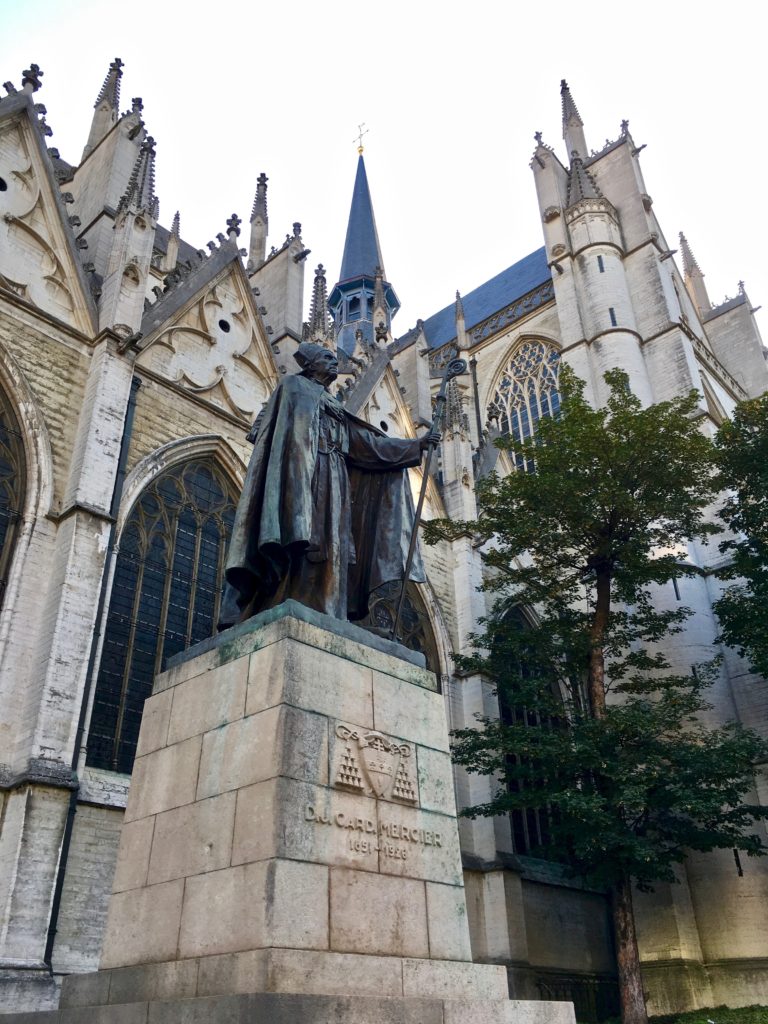
CARDINAL MERCIER
Location: Place Sainte-Gudule – Brussels City
Sculptor: Égide Rombaux
Inauguration: 1954
On the right side of the Cathedral of St. Michael and St. Gudula stands the statue of Désiré-Joseph Mercier, a Belgian cardinal who was a prominent resistance leader during the First World War. When the Germans overran Belgium and King Albert I was forced to govern in exile, it was Cardinal Mercier who stepped up and became a voice and a beacon for the Belgian resistance. At the risk of arrest or death, he published and distributed open letters criticising the German occupation and calling on Belgians not to give up. Using his influence and popularity among German Catholics, Mercier successfully campaigned against deporting Belgian workers to factories in Germany.
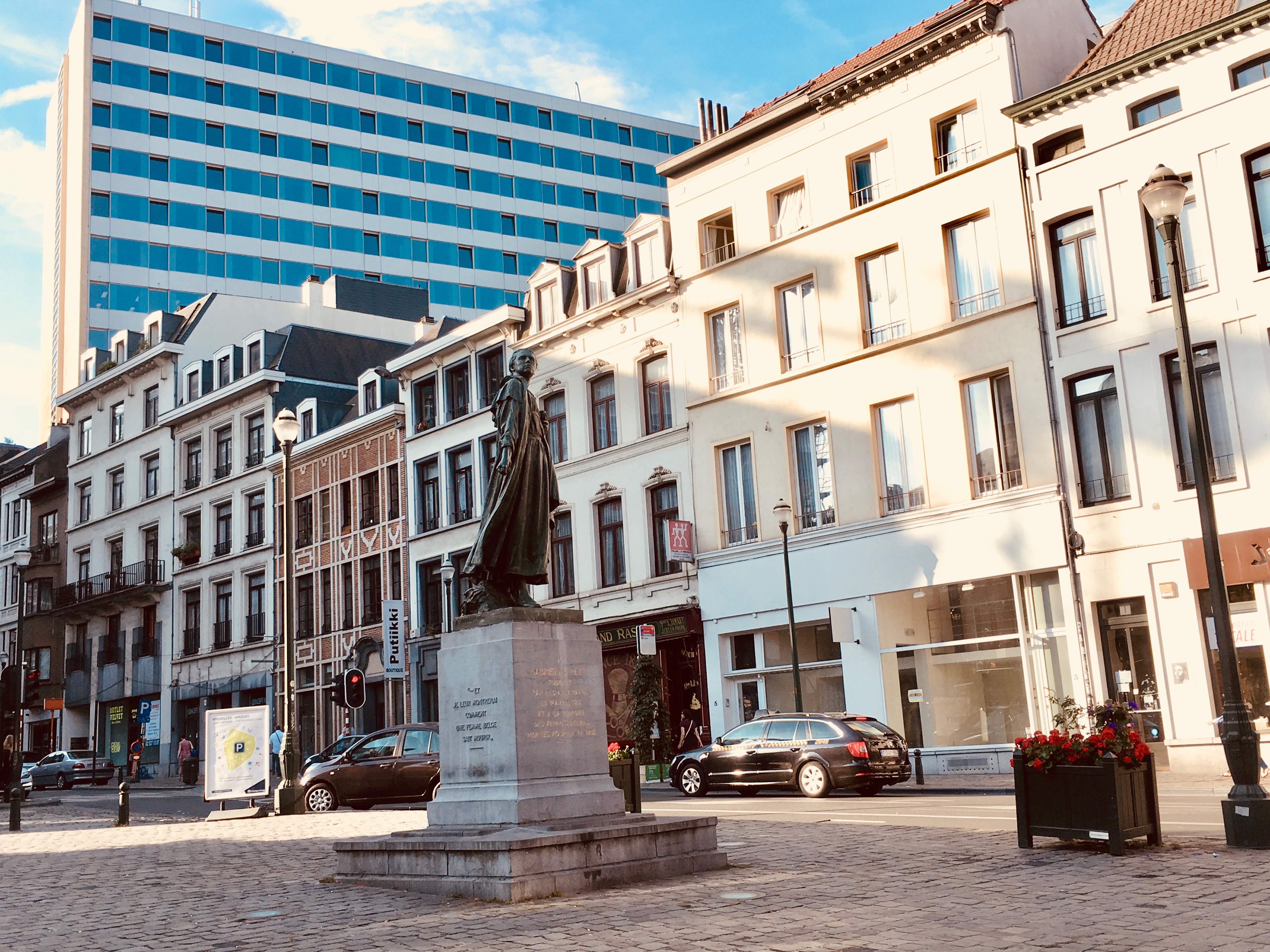
GABRIELLE PETIT
Location: Place Saint-Jean – Brussels City
Sculptor: Égide Rombaux
Inauguration: 1923
Another Belgian heroine of World War I, Gabrielle Petit served as a secret intelligence agent for the British General Headquarters. She gathered information on the German troops stationed in the border area between the Hainaut province and northern France. In 1916, she was arrested, imprisoned, and tried and convicted for espionage. She was shot by a firing squad at the Tir National military complex in Schaerbeek. The inscription on the base of her statue reads, “I have just been condemned to death. I will be shot tomorrow. Long live the King. Long live Belgium.”
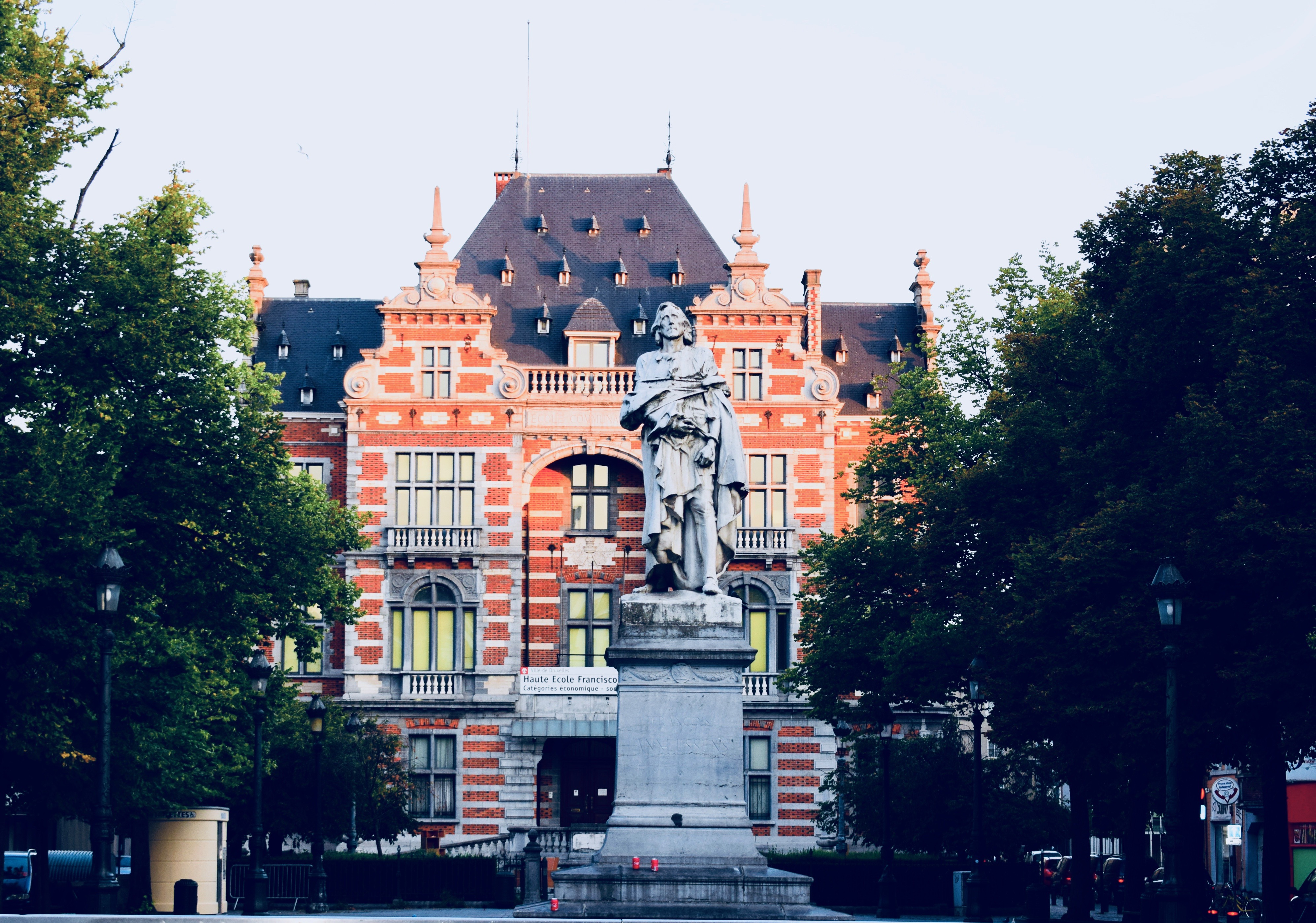
FRANÇOIS ANNEESSENS
Location: Place Anneessens along Boulevard Lemonnier – Brussels City
Sculptor: Thomas Vinçotte
Inauguration: 1889
François Anneessens was beheaded at the Grand Place on September 19, 1719. Why? Because he fought against new laws essentially undermining the rights and privileges of guilds in Brussels back in early 18th century.
Anneessens was a Dutch guild leader at a time when Brussels’ economic life was dominated by nine craft guilds known as the Nine Nations of Brussels. These guilds wielded certain privileges dating back to early medieval ages. In 1716, when the territory of present-day Belgium was under Austrian leadership, the government wanted to raise taxes and divest the guilds of their long-held power. Anneessens led the rebellion against these reforms. He was arrested, imprisoned for six months, and later condemned to death.
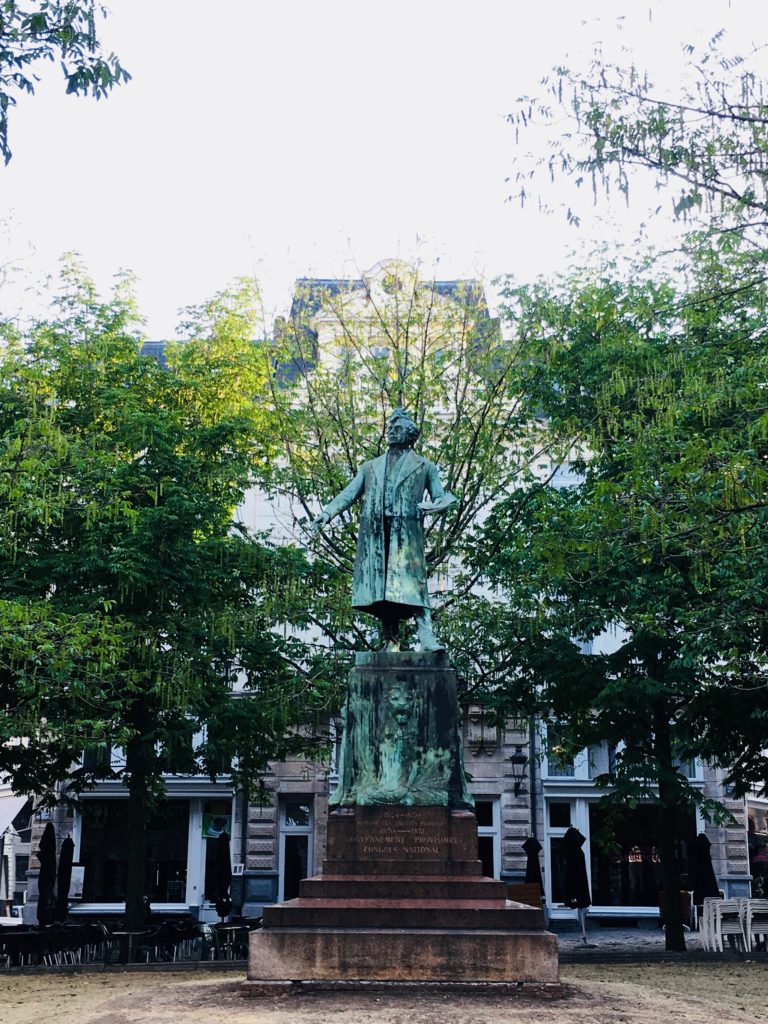
CHARLES ROGIER
Location: Place de la Liberté – Brussels City
Sculptor: Guillaume De Groot
Inauguration: 1897
His name sounds familiar since one of Brussels’ famous avenues is named after him. Charles Rogier was one of the leaders and heroes of the 1830 Belgian Revolution. He led a group of fighters from Liège during the Belgian rebellion against the Dutch-dominated Kingdom of the United Netherlands. After Belgium gained independence in 1831, Rogier became a principal liberal leader of the Belgian government. He later served as Prime Minister of Belgium from 1847 to 1852 and from 1857 to 1867.
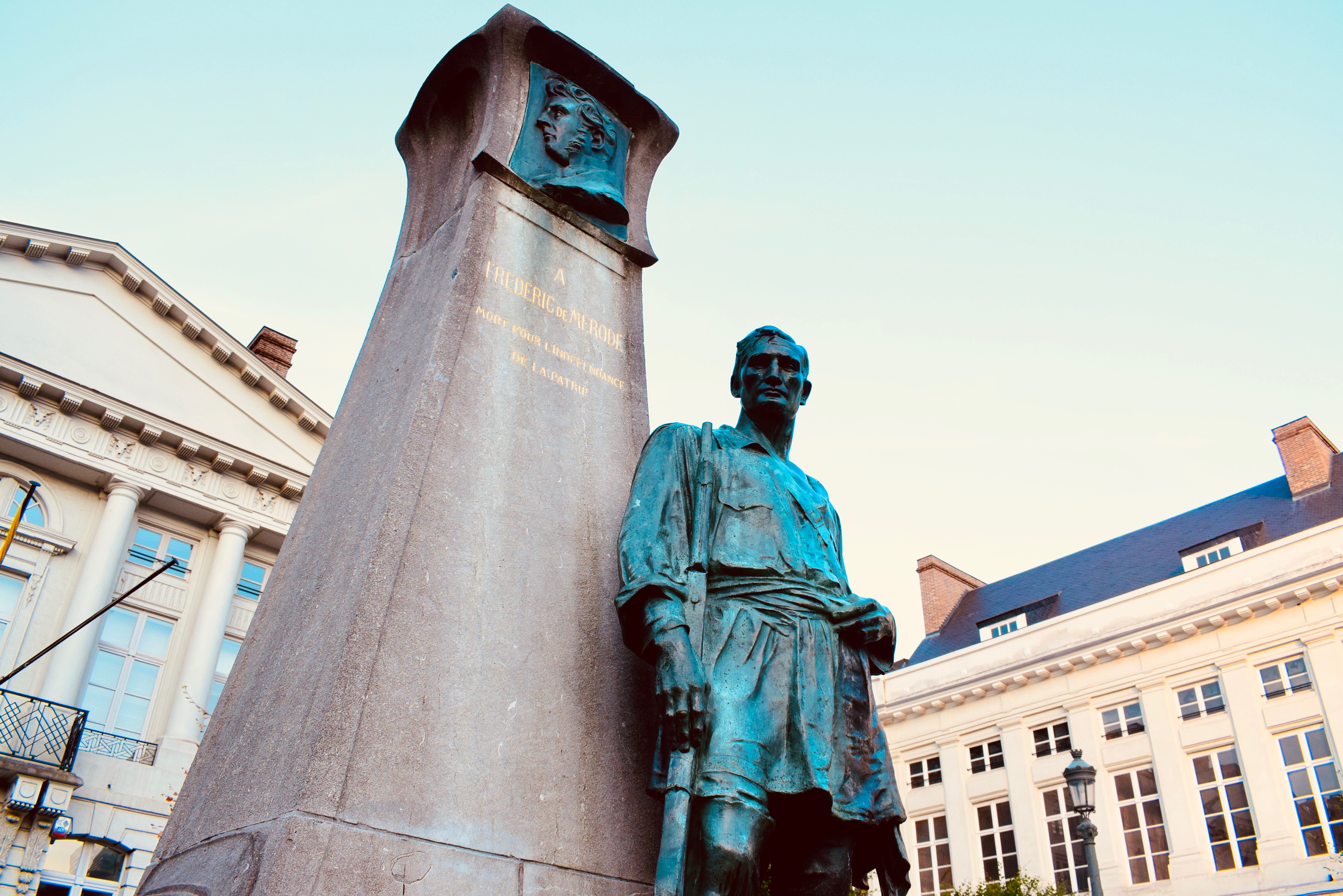
FRÉDÉRIC DE MÉRODE
Location: Place des Martyrs – Brussels City
Sculptor: Paul Du Bois
Inauguration: 1897
Frédéric de Mérode is another hero of the Belgian war of independence. He was a member of the House of Mérode, one of the most illustrious families of the Belgian nobility. During the 1830 uprising, he joined the revolutionary army in combat against the Dutch forces. He was mortally wounded in the Battle of Berchem and died a few days later. He is remembered as the first member of the Belgian high nobility to die fighting for Belgian independence.
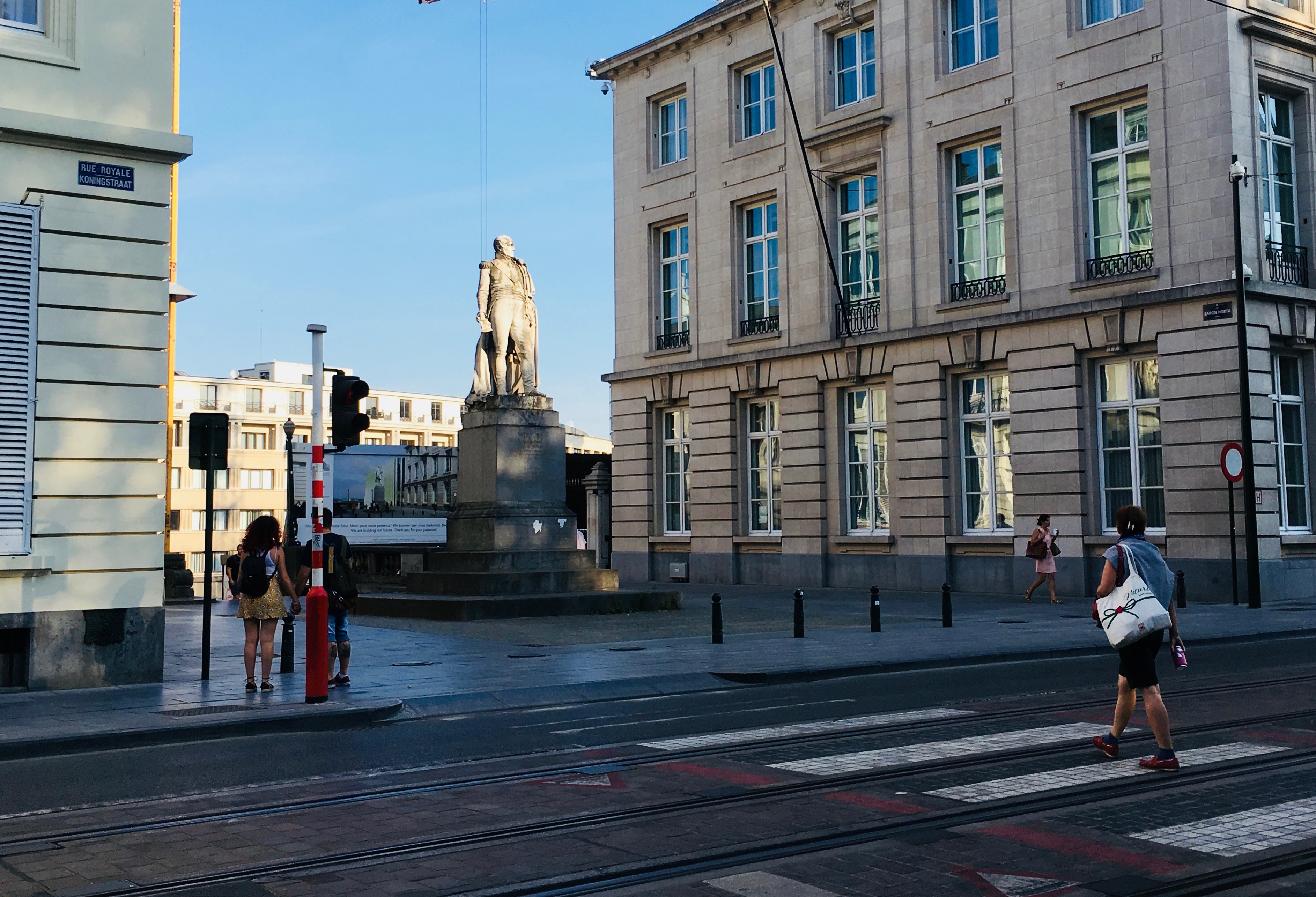
GENERAL BELLIARD
Location: Along Rue Royale – Brussels City
Sculptor: Guillaume Geefs
Inauguration: 1836
How many times have you taken the stairs along Rue Royale going to Rue Baron Horta without noticing the statue of French General Augustin-Daniel Belliard? He’s there for a reason. When Belgium gained independence, Belliard became the first French ambassador to Brussels. At the time, the support of France was vital to the survival of the newly-proclaimed Kingdom of Belgium. His statue was intentionally placed right in front of Parc Royale because in 1832, he died of a stroke right in the park. Two streets in Belgium are named after him, Rue Belliard in Brussels’ Leopold District and Belliardstraat in Antwerp.
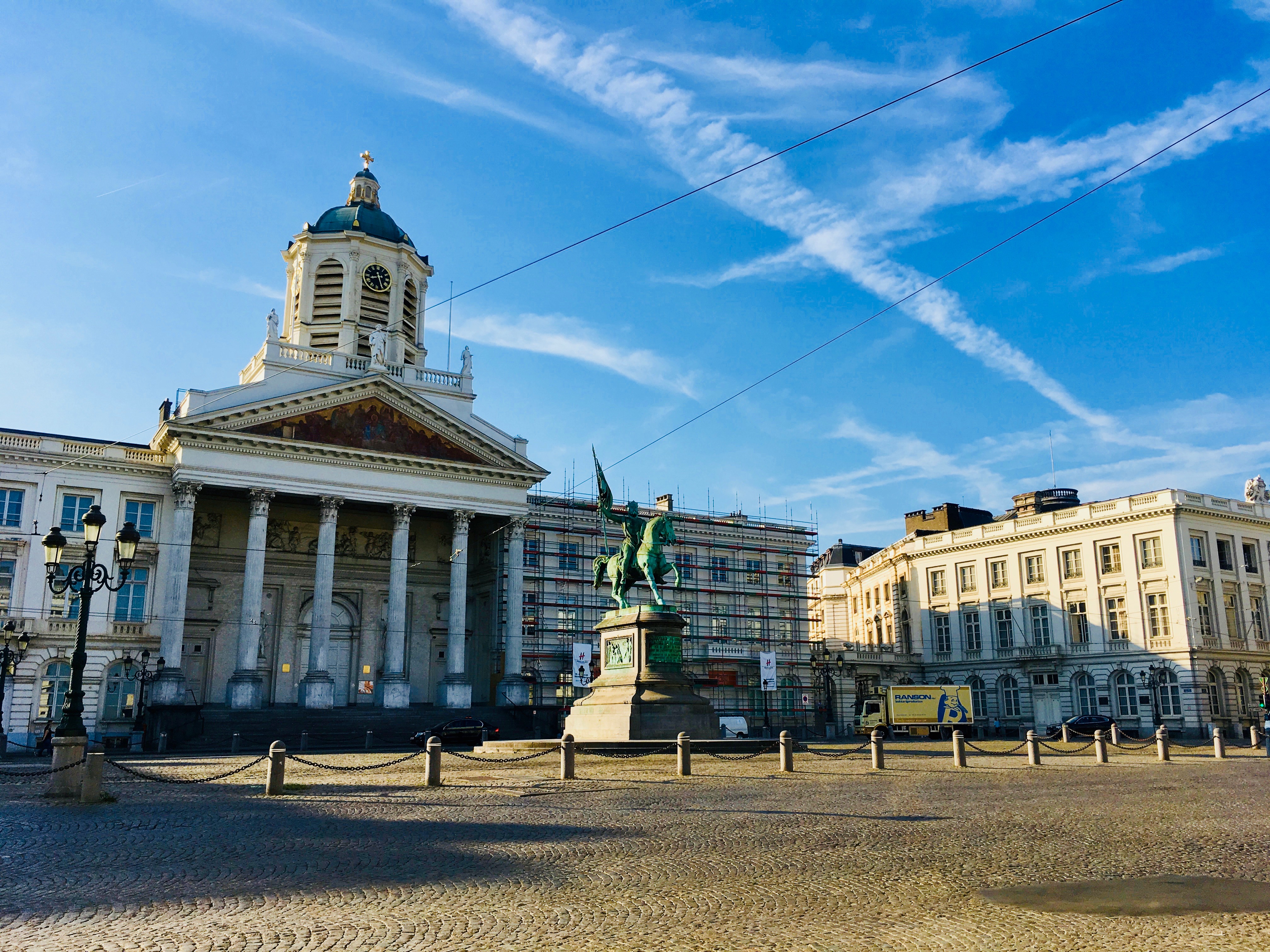
GODEFROID DE BOUILLON
Location: Place Royale – Brussels City
Sculptor: Eugène Simonis
Inauguration: 1848
The very first equestrian statue in Brussels was that of Godefroid de Bouillon. In case you never noticed, the sculpture dominates the center of Place Royale. Known as the crusader king, Godfrey of Bouillon was a Frankish knight and leader of the First Crusade during the 11th century. After the crusaders recaptured Jerusalem from the Muslims in 1099, he became the first ruler of the Kingdom of Jerusalem. His statue was erected in Place Royale at a time when Belgium was a young nation and the Belgians were looking for symbols of heroism and patriotism. It replaced the statue of Charles de Lorraine who was an Austrian general of the Roman empire in the 18th century. Another statue was built in honor of Charles de Lorraine at the Place du Musée.
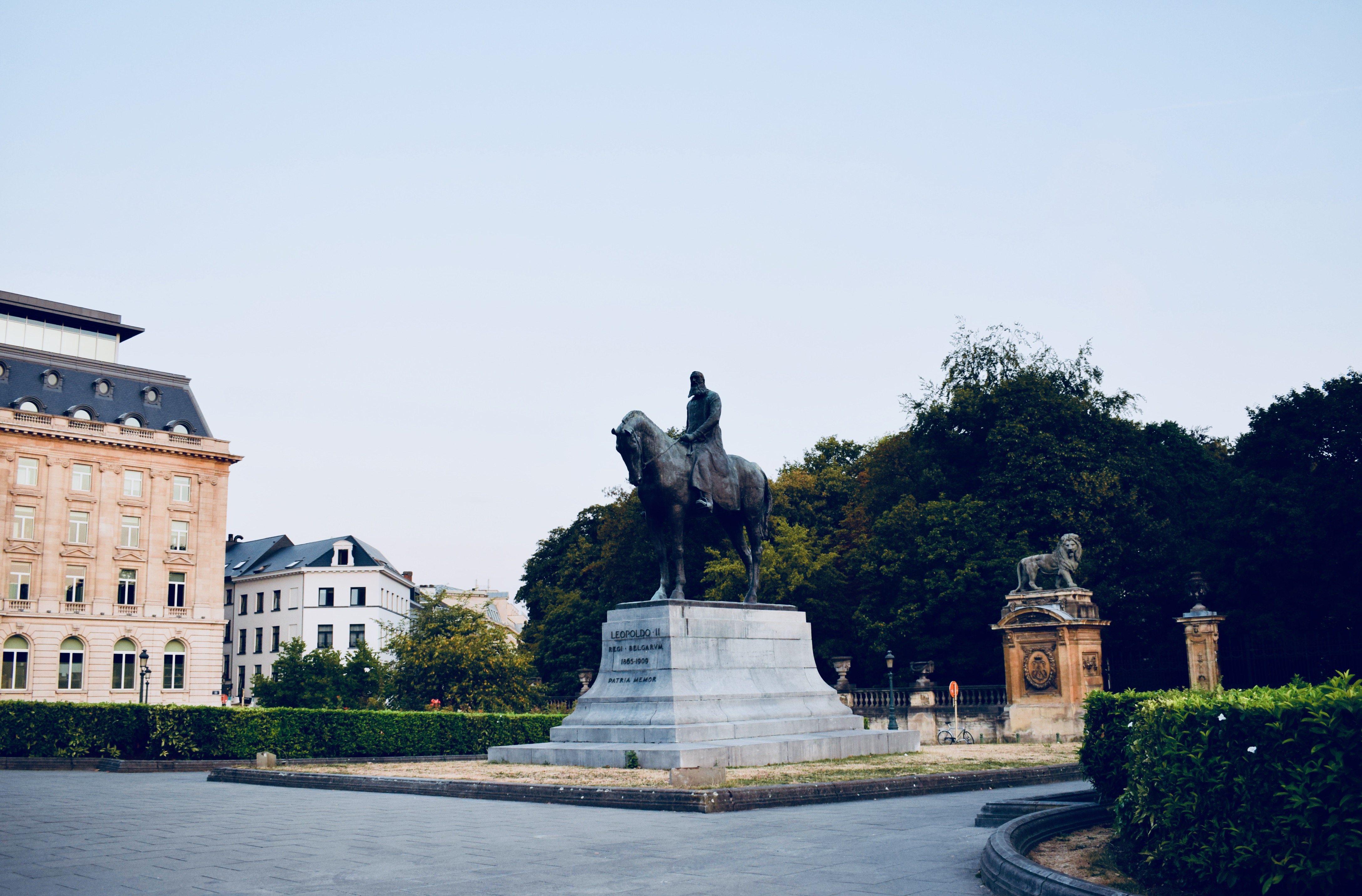
KING LEOPOLD II
Location: Place du Trône – Brussels City
Sculptor: Thomas Vinçotte
Inauguration: 1926
Statues can also serve as reminders of how people’s views and values can change over time. Such is the case of memorials built in honor of King Leopold II who reigned from 1865 to 1909. He may have been considered a hero during his time. But in recent years, he has come to be viewed as a villain.
Notorious for masterminding the exploitation of the Congo Free State and blamed for the deaths of millions of Congolese, King Leopold II has been called a tyrant and a mass murderer. There have been demands to tear down his statues in Belgium. But the Belgians also remember him as the “Builder King” who initiated numerous ambitious urban projects and public works including massive road and railway constructions. Under his regime, primary education became compulsory and girls secured the right to education.


